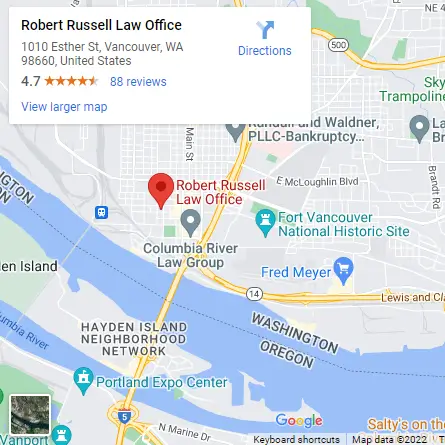Normal Method To Start A Lawsuit
Normally, a creditor (plaintiff) will start a lawsuit by filing a Summons and Complaint with the appropriate court. The court assigns a case number to the lawsuit. The Complaint sets out the reason for the alleged claim. The Summons sets out how and when the person sued (defendant) must respond to prevent entry of a judgment against them. The plaintiff then serves the defendant with a copy of the filed Summons and Complaint, both of which will show the case number. The defendant typically has twenty days after being served with the Summons and Complaint to respond appropriately. If the Defendant fails to timely respond (usually by filing an Answer), the plaintiff is entitled to a (default) judgment. The timely response needs to be filed with the court and the plaintiff.
Sneaky: Service Of An Unfiled Complaint
In Washington, however, unlike many other states, a plaintiff can start a lawsuit by merely serving an unfiled Summons and Complaint on a defendant. In other words, in Washington, the Summons and Complaint do NOT have to be filed with the court to start a lawsuit. To prevent entry of a default judgment, the defendant still MUST file a timely response to the Complaint. In this scenario, since there is no case filed with the court, the Defendant can only file a response with the plaintiff. A Defendant’s failure to timely respond to the Complaint can lead to entry of default judgment. In other words, if the defendant does not respond within the twenty days, the plaintiff can go to court, file the lawsuit, assert that the defendant did not object and ask the court to enter judgment against the defendant. The defendant does not have any right to be told that the lawsuit was actually filed or that judgment was entered. If a defendant does timely respond, a defendant should also demand that the lawsuit be filed within 14 days of the response. Failure to make such a request means that the plaintiff can wait as long as it wants to file the lawsuit. In other words, if a Defendant does not demand that a lawsuit be filed, the Plaintiff can, for example, wait months and then file the lawsuit; it leaves a defendant in limbo as to what a Plaintiff might do.
[Note: A defendant responding to an unfiled Complaint must be prepared to prove that they timely responded. As a result, at a minimum, a response by regular and certified mail with return receipt requested would be prudent. Personal service on the plaintiff with acknowledgment of receipt is not required but would also be useful. Also, a Defendant served with an unfiled Complaint might periodically check with the court to see if the lawsuit has since been filed. If a defendant has timely responded and then a lawsuit is filed, your response should be in the court file. If it is not, file it immediately with the court.]
Why Might A Creditor Serve An Unfiled Complaint?
A plaintiff does not need to pay a filing fee if a case is not filed with the court. So, a creditor can serve a Complaint and see if the Defendant responds. If there is no response, then they can spend the money for the filing fee and know they will (likely) get a judgment. If the defendant responds, they may be able to work out a settlement deal without having to spend the filing fee. Also, some defendants do not know that if they do not timely respond a judgment can be entered.
Procedure After Responding To An Unfiled Complaint
If a Defendant timely responds to an unfiled Complaint AND demands that a lawsuit be filed, the plaintiff has two choices: (1) The Plaintiff must file the lawsuit and the Defendant’s Answer with the court within 14 days, or (2) The Plaintiff can choose to not file the lawsuit within the 14 days and it is as if the Summons and Complaint were never served; judgment cannot be entered. If the lawsuit is filed, the Plaintiff should provide the case number to the Defendant.
Do Not Be Fooled – Unfiled Complaint
If you are served a Summons and Complaint that does not have a case number, that does NOT mean that you are not being sued. You should check with the court to see if the case was actually filed. If the lawsuit was filed, then get the case number. If the case was filed, then you need to follow the instructions in the Summons and file a timely response with the court and plaintiff. If the case was not filed with the court, you MUST STILL file a timely response with the Plaintiff in order to prevent entry of a judgment against you.
Some creditors count on you not knowing these rules. Don’t be fooled. Be prepared. If you have been served and you have questions, we can help. You know where to find us.



